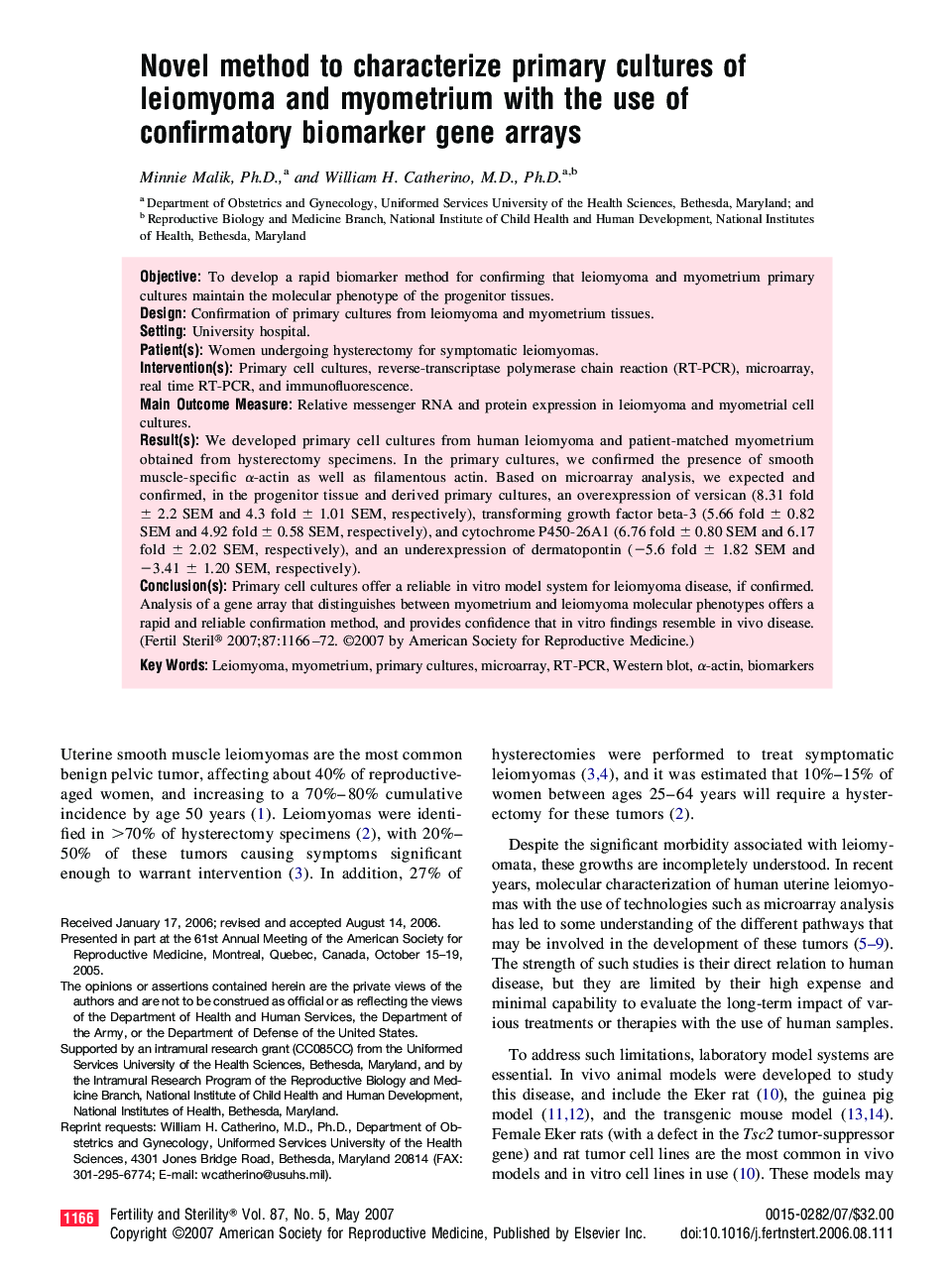| Article ID | Journal | Published Year | Pages | File Type |
|---|---|---|---|---|
| 3936045 | Fertility and Sterility | 2007 | 7 Pages |
ObjectiveTo develop a rapid biomarker method for confirming that leiomyoma and myometrium primary cultures maintain the molecular phenotype of the progenitor tissues.DesignConfirmation of primary cultures from leiomyoma and myometrium tissues.SettingUniversity hospital.Patient(s)Women undergoing hysterectomy for symptomatic leiomyomas.Intervention(s)Primary cell cultures, reverse-transcriptase polymerase chain reaction (RT-PCR), microarray, real time RT-PCR, and immunofluorescence.Main Outcome MeasureRelative messenger RNA and protein expression in leiomyoma and myometrial cell cultures.Result(s)We developed primary cell cultures from human leiomyoma and patient-matched myometrium obtained from hysterectomy specimens. In the primary cultures, we confirmed the presence of smooth muscle-specific α-actin as well as filamentous actin. Based on microarray analysis, we expected and confirmed, in the progenitor tissue and derived primary cultures, an overexpression of versican (8.31 fold ± 2.2 SEM and 4.3 fold ± 1.01 SEM, respectively), transforming growth factor beta-3 (5.66 fold ± 0.82 SEM and 4.92 fold ± 0.58 SEM, respectively), and cytochrome P450-26A1 (6.76 fold ± 0.80 SEM and 6.17 fold ± 2.02 SEM, respectively), and an underexpression of dermatopontin (−5.6 fold ± 1.82 SEM and −3.41 ± 1.20 SEM, respectively).Conclusion(s)Primary cell cultures offer a reliable in vitro model system for leiomyoma disease, if confirmed. Analysis of a gene array that distinguishes between myometrium and leiomyoma molecular phenotypes offers a rapid and reliable confirmation method, and provides confidence that in vitro findings resemble in vivo disease.
